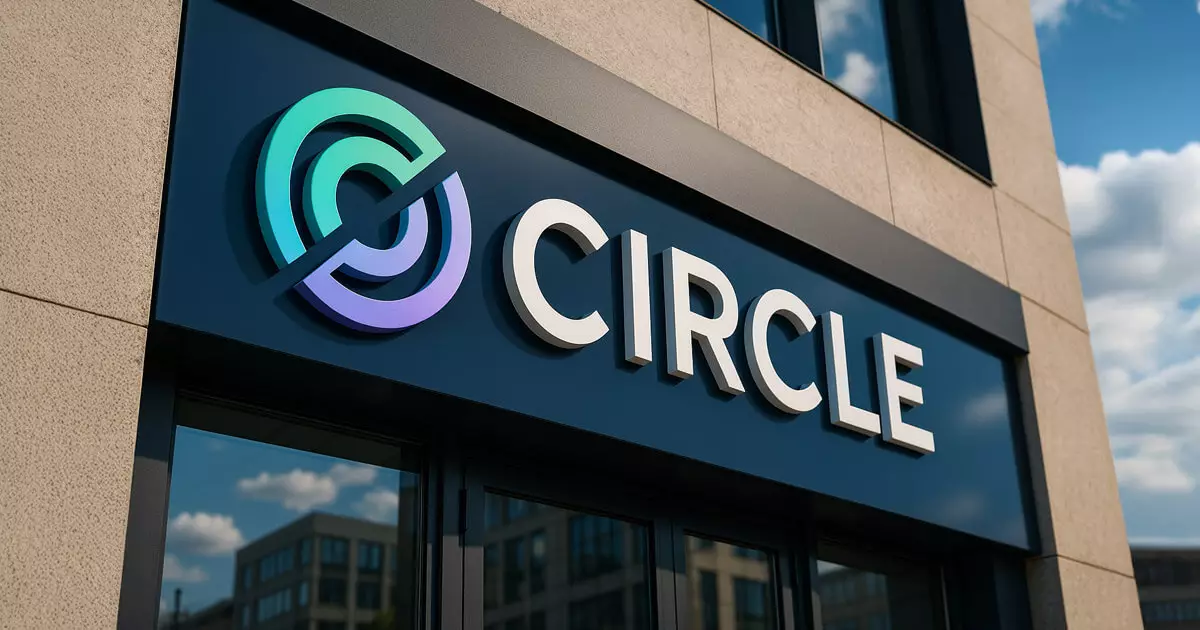Circle’s ambition to go public, targeting a staggering valuation of $5 billion, represents a bold stride in a fluctuating cryptocurrency landscape marred by regulatory uncertainty and market volatility. However, news of potential acquisition talks with giants like Coinbase or Ripple casts a long shadow over this endeavor. While the idea of an IPO can be exhilarating, it simultaneously raises deep-seated questions about the nature of capital in the blockchain era. Will going public allow Circle to maintain the independence it has worked tirelessly to cultivate, or will selling itself dilute its vision into mere corporate mundanity?
The reality is that the crypto world thrives on innovation, not just market capitalization. When someone hears “stablecoin issuer,” they should immediately think of cutting-edge financial technology and not the staid financial institutions of the past. If Circle cuts ties to maintain a presence in the market, it does so at a cost – the price of innovation. While the IPO route could mean newfound resources for growth, aligning with powerhouse entities like Coinbase may ensure survival amidst competition, but it risks transforming the ethos of decentralization into one that bends towards centralized control.
The Inescapable Link Between Circle and Coinbase
The historical relationship between Circle and Coinbase is compelling. Once co-governors of the USDC stablecoin as part of the Centre Consortium, both entities share an intricate web of interests that now leaves Circle in a precarious position—particularly after the dissolution of their governance structure in 2023. Though they have taken independent paths, the overlap in their financial interests suggests a future where collaboration is inevitable. Reports indicate that insiders perceive a potential acquisition by Coinbase as a logical step, and it is difficult to ignore the weight of this concern.
The revenue-sharing agreement between the two players underscores a symbiotic relationship: while Circle has full governance over USDC, Coinbase’s position as the platform for its trade makes it indispensable for Circle’s revenue generation. This dependency is a double-edged sword; it represents an avenue for financial growth but also a potential chokehold on innovation should Coinbase decide to pivot away from partnership. The idea that Circle might sell itself at a moment’s notice underscores the fragility of its current strategic position.
Ripple’s Ambitious Offer: A Reckoning or a Misstep?
Ripple’s approach adds another layer to the unfolding narrative. The $4 billion to $5 billion offer by Ripple, though rejected by Circle as inadequate, highlights the aggressive competitiveness in the crypto sphere. Ripple’s historical tendencies to make risky acquisitions could position them as strong contenders in a savvy market. However, the complex dynamics surrounding XRP and ongoing regulatory challenges pose stark questions about its viability as a partner for Circle.
The deal’s structure, proposed as a mix of cash and XRP, might allure some, particularly given Ripple’s substantial holding of the token. Yet, the rejection reveals a critical insight rooted in valuation — Circle seems to place itself at a higher tier than the offer reflected. It raises an essential point about valuation in a rapidly evolving market. This is not just about numbers but about the belief in the potential and stability that Circle can bring to its stakeholders as they navigate uncharted waters.
Coinbase: The Scent of Opportunity
Coinbase’s mammoth cash reserves and recent successful acquisitions suggest a preparedness to make a strategic purchase that could not only bolster its market share but also its standing in the ever-evolving digital currency ecosystem. Acquiring Circle could align with Coinbase’s overarching strategy of expanding its influence, while also enhancing its crypto offerings to users who are increasingly leaning towards stablecoin use.
Furthermore, with Circle’s unique position in the stablecoin market, integrating it into Coinbase could yield unprecedented synergy — but at a cost. The question remains: would this acquisition stifle Circle’s innovative edge, relegating it to become just another cog in the Coinbase machine? The answer could alter the trajectory of both companies and potentially reshape the landscape for stablecoins moving forward. The conversations abound, but the implications of such decisions will resonate well beyond their balance sheets and income statements, settling deep into the ethos of what decentralized finance truly means.















